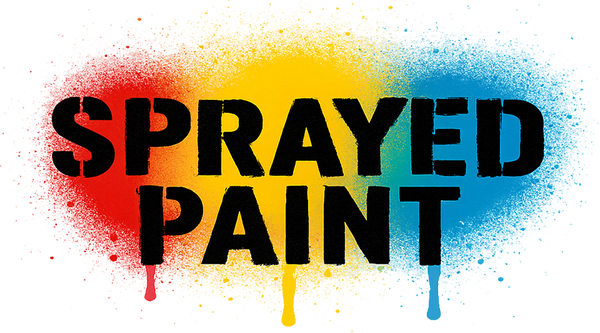
Street Art
-
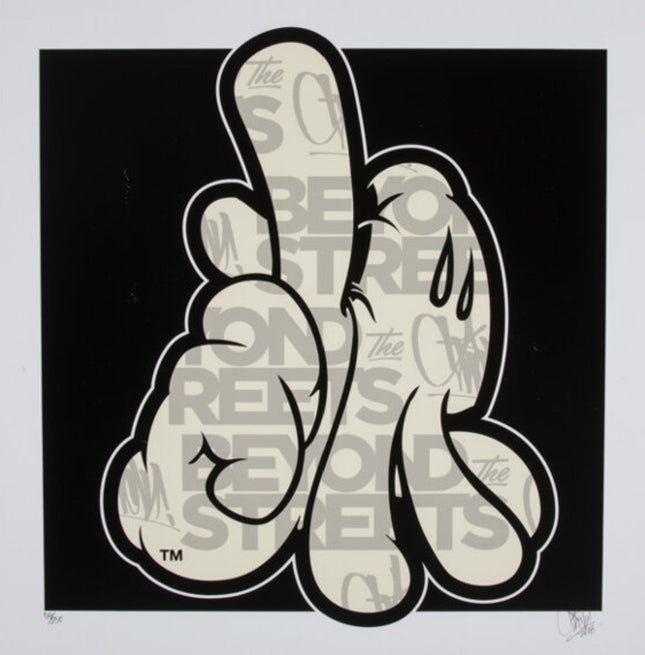
OG Slick Beyond LA Silkscreen Print by OG Slick
Beyond LA 2-Color Hand-Pulled Limited Edition Silkscreen Print on 298 GSM Classic Crest Solar White Paper by Pop Artist OG Slick x Beyond The Streets. 2018 Signed & Numbered Limited Edition of 250 Artwork Size 24x24. Scattered creases on the left side of the print. OG Slick (b. 1967) Beyond LA, 2018 Screenprint in colors on Classic Crest Solar White paper 24 x 24 inches (61 x 61 cm) (sheet) Ed. 59/250 Signed, numbered, and dated in pencil along lower edge Published by Beyond the Streets, Los Angeles
$845.00
-
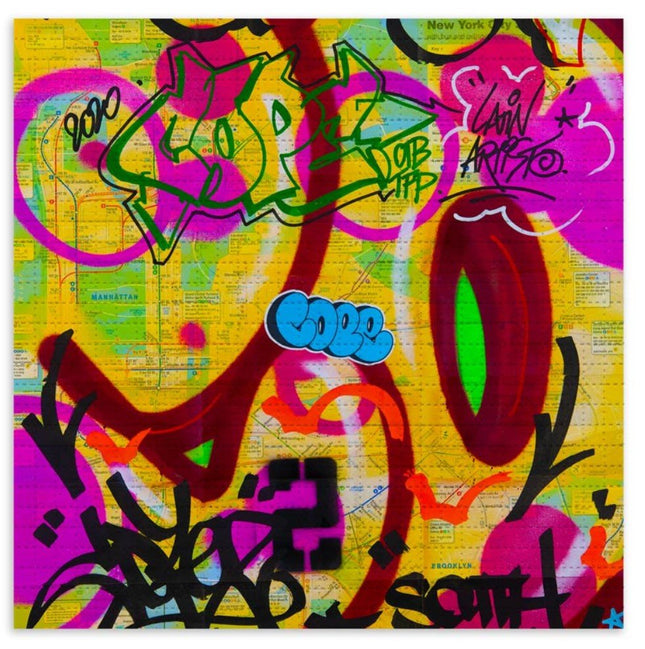
Cope2- Fernando Carlo NY Tripway Map IV Blotter Paper Archival Print by Cope2- Fernando Carlo
NY Tripway Map IV Blotter Paper Limited Edition Archival Pigment Print Art on Perforated Blotter Paper by Cope2 pop culture LSD artwork. Archival Pigment Print on Perforated Blotter Paper Size: 7.5 x 7.5 Inches Release: April 19, 2021 Limited blotter editions are hand-perforated by Zane Kesey & may vary slightly from the example shown. Fernando Carlo a.k.a COPE2 is an American artist, active in the graffiti scene of New York. Cope2’s involvement in the street art scene of the 80s and 90s progressively made his reputation grow, making him one of the most well-known writers in the US. Controversial, yet iconic, the artist’s story and his involvement in graffiti since the last decades of the 20th century shed light on the history of graffiti itself and its evolution over the years.
$450.00
-
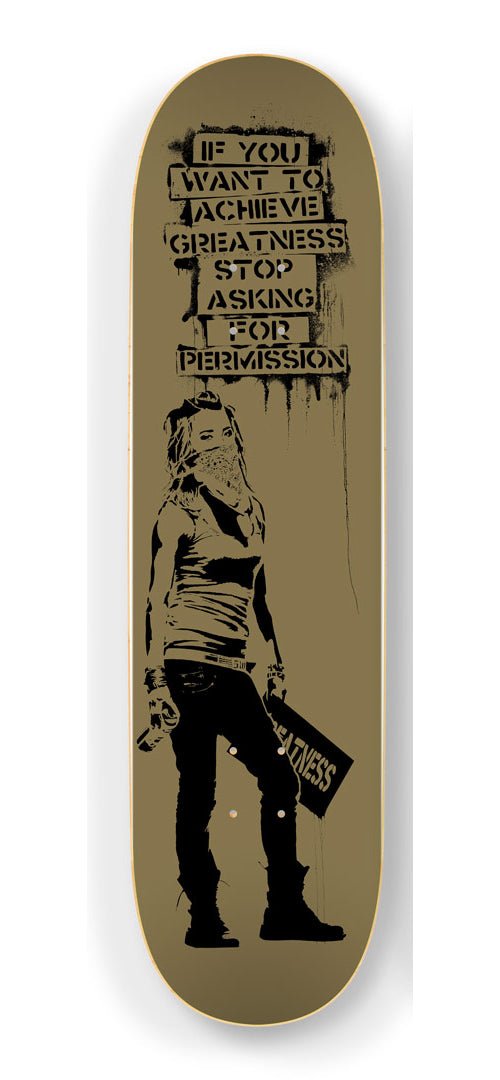
Eddie Colla Stop Asking For Permission Gold Skateboard Art Deck by by Eddie Colla
Stop Asking For Permission- Gold Limited Edition Screen Print with Archival Pigment Print Transfer on Cold Pressed Steep Natural Skate Deck Skateboard art by street pop culture artist Eddie Colla. Since 2005, his wheatpastes and stencils can be found throughout public spaces in the Bay Area, Los Angeles, and Miami. Eddie's work first began to garner national recognition when his street art began incorporating images of Barack Obama throughout the 2008 Presidential election. His growing popularity landed him attention on internet blogs, features in six published books, and participation in the "Manifest Hope Art Gallery" shows at the 2008 Democratic National Convention and at the Presidential Inauguration in Washington D.C. His designs have been transformed many times over, from stickers, album and magazine covers.
$228.00
-
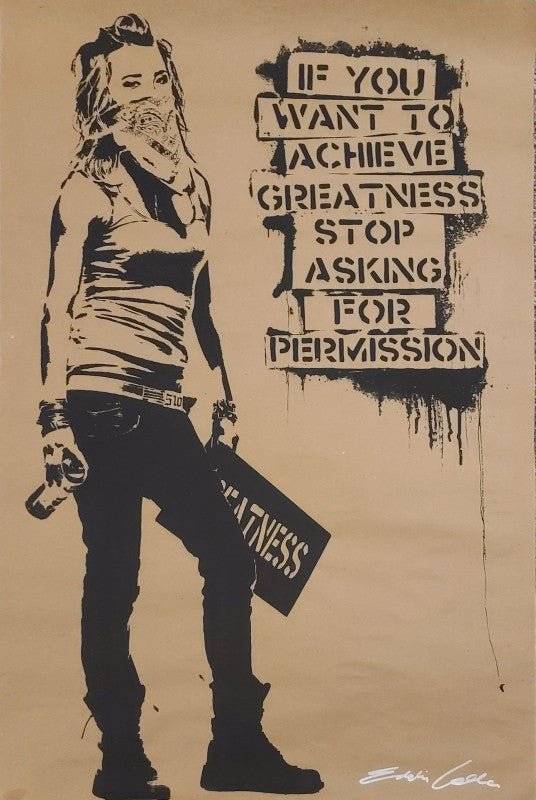
Eddie Colla Ambition 24X36 HPM Stencil Silkscreen Print by Eddie Colla
Ambition 24X36 HPM Hand-Pulled 1-Color Silkscreen Print on Butcher Paper by Artist Eddie Colla Limited Edition Pop Art Artwork. 2021 Signed HPM Limited Edition Artwork Size 24x36
$203.00
-
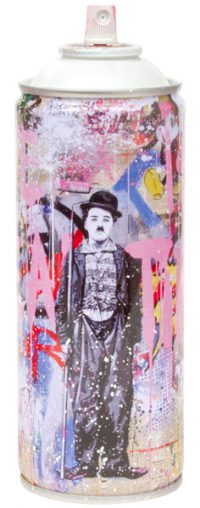
Mr Brainwash- Thierry Guetta Gold Rush White Spray Paint Can Sculpture by Mr Brainwash- Thierry Guetta
Gold Rush- White Limited Edition Spray Paint Can Sculpture Artwork by street artist graffiti & pop culture legend Mr Brainwash- Thierry Guetta. 2020 Signed & Numbered Limited Edition of 150 Artwork Size 3x8 Signed Via Thumbprint & Numbered With Custom Display Box. Ultra rare and very cool Mr Brainwash- Thierry Guetta limited edition spray paint can artwork collectibles.
$504.00
-
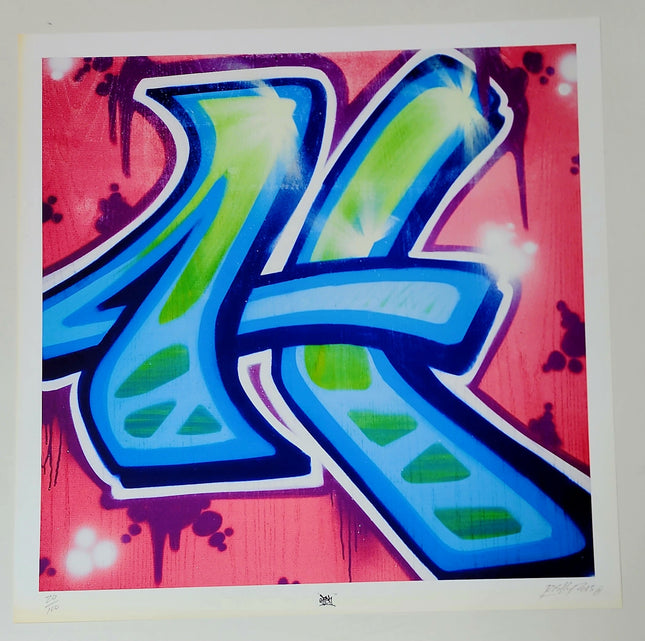
Risk Rock Risky H Graffiti Alphabet Letter Giclee by Risk Rock
Risky H Graffiti Alphabet Letter Giclee by Risk Rock on Fine Art Paper Limited Edition Pop Street Art Artwork. 2012 Signed & Numbered Limited Edition of 100 Artwork Size 24x24 From the first “Beyond The Streets” exhibit in 2012. Museum Quality Paper With Minor to Light Margin Yellowing, Image Perfect, and Can Be Easily Covered With Mat.
$470.00
-
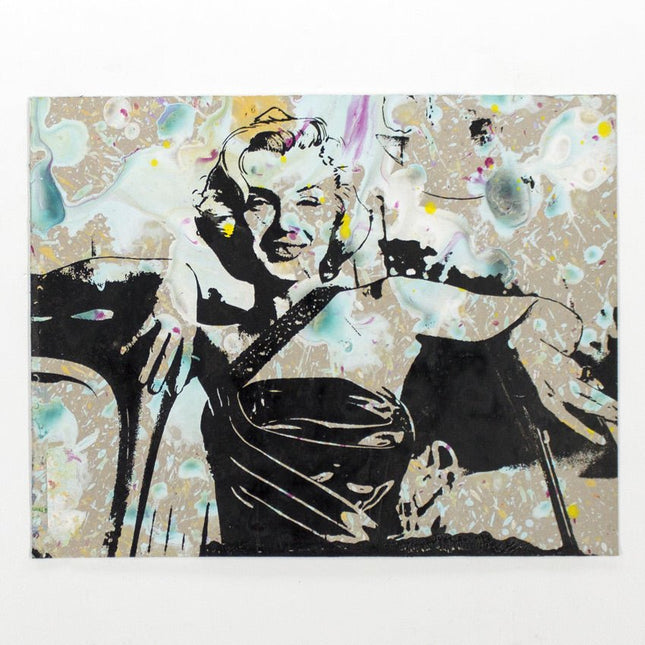
Bobby Hill Marilyn Monroe 02 HPM Acrylic Silkscreen Print by Bobby Hill
Marilyn Monroe 02 Limited Edition Hand-Embellished Mixed Media Screen Print on 200lbs Heavyweight Paper by Bobby Hill Graffiti Street Artist Modern Pop Art. Each piece is unique and colors, painting, spray paintings made by hand by the artist are random, vary, and you may not receive the exact pictured item! "I use photographic images as the basis for the art, but I would sometimes draw directly on the acetate before I burn the screens to bring out parts of the images I felt were important. Each piece for this run was individually screen printed and hand-painted using a variety of acrylic and other mediums. Take notice of the colors rather than the image, even though that might be difficult to do sometimes. The colors represent what's going on in my life at any given moment." - Bobby Hill
$159.00
-
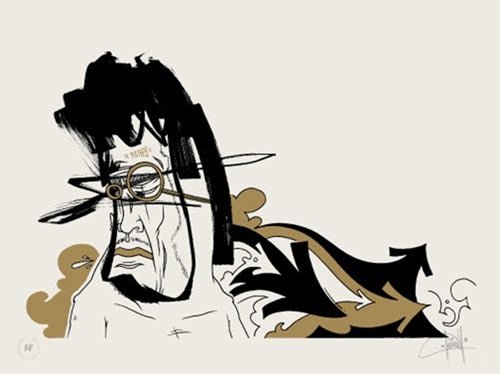
Dave Kinsey Filthy Silkscreen Print by Dave Kinsey
Filthy Limited Edition 2-Color Hand-Pulled Silkscreen Print on 100% Cotton Rag Archival Paper by Dave Kinsey Graffiti Street Artist Modern Pop Art. BLK/MRKT
$214.00
-
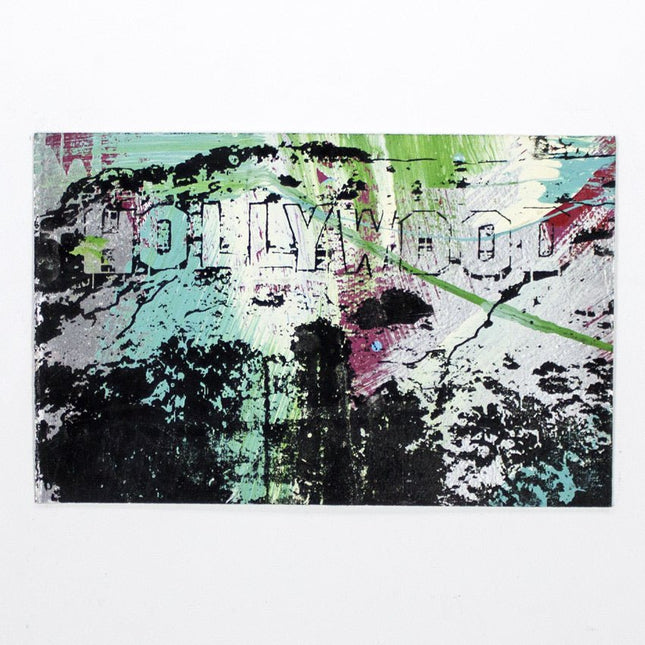
Bobby Hill Hollywood Sign HPM Acrylic Silkscreen Print by Bobby Hill
Hollywood Sign Limited Edition Hand-Embellished Mixed Media Screen Print on 200lbs Heavyweight Paper by Bobby Hill Graffiti Street Artist Modern Pop Art. Each piece is unique and colors, painting, spray paintings made by hand by the artist are random, vary, and you may not receive the exact pictured item! "I use photographic images as the basis for the art, but I would sometimes draw directly on the acetate before I burn the screens to bring out parts of the images I felt were important. Each piece for this run was individually screen printed and hand-painted using a variety of acrylic and other mediums. Take notice of the colors rather than the image, even though that might be difficult to do sometimes. The colors represent what's going on in my life at any given moment." - Bobby Hill
$159.00
-
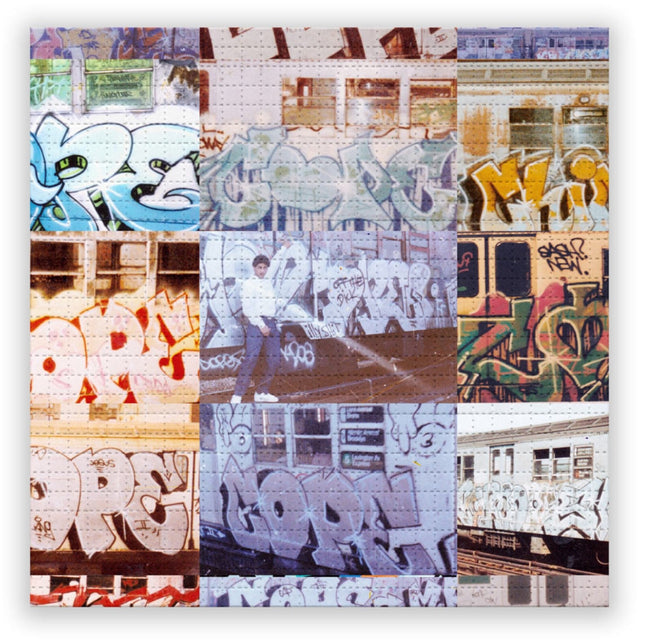
Cope2- Fernando Carlo Bronx Legend Blotter Paper Archival Print by Cope2- Fernando Carlo
Bronx Legend Limited Edition Fine Art Blotter Paper Archival Pigment Print Art on Perforated Blotter Paper by Modern Pop Artist Cope2. Archival Pigment Print on Perforated Blotter Paper Size: 7.5 x 7.5 Inches Release: April 19, 2022 Limited blotter editions are hand-perforated by Zane Kesey.
$352.00
-
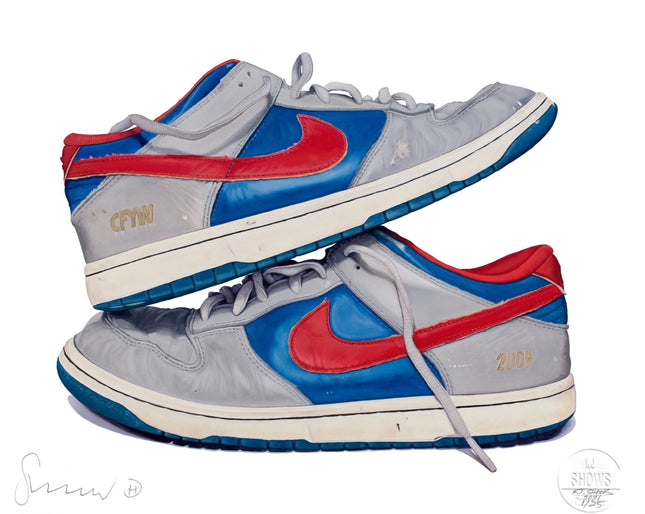
CFYW Sole of the Artist CFYW Portrait Archival Print by CFYW
Sole of the Artist: CFYW Portrait Limited Edition Archival Pigment Fine Art Prints on 290gsm Moab Entrada Rag Bright Art Paper by Graffiti Street Art and Pop Culture Artist CFYW x KJ Shows. Sole of the Artist: CFYW Portrait • Autographed archival pigment print • Printed on Moab Entrada Rag Bright 290 GSM archival paper • 14 x 17 inches Hand-signed, dated, numbered and embossed by KJ Shows Additionally signed by Geoff Hargadon (Cash For Your Warhol) Limited edition of 25
$214.00
-
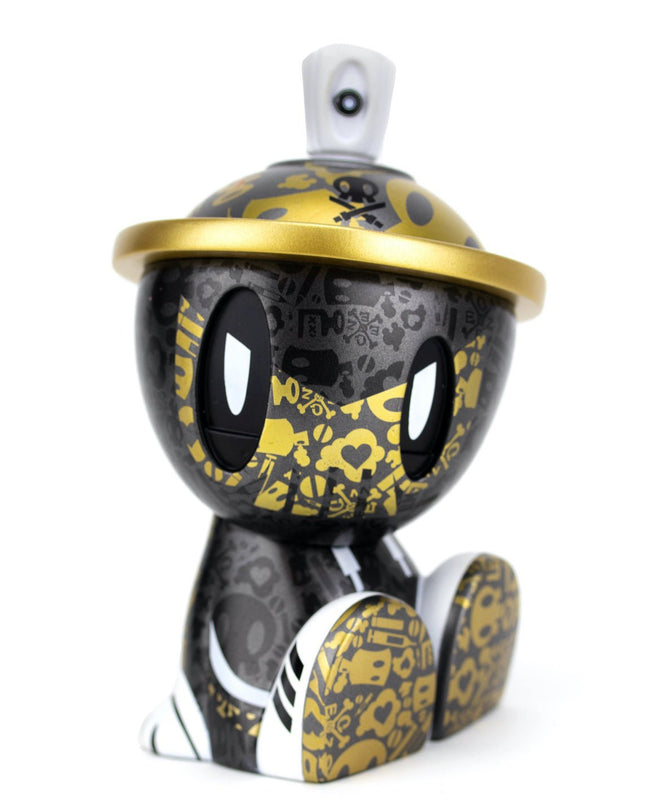
Quiccs VSOG Gold Canbot Canz Art Toy Figure by Quiccs x Czee13
VSOG Gold Canbot Canz Limited Edition Vinyl Art Toy Collectible Artwork by street graffiti Czee13 x Quiccs. 2021 Limited Edition of 300 The VSOG Gold Canbot Canz Vinyl Figure by Quiccs x Czee13 x Clutter x NTWRKCheck out this rad-looking VSOG Gold Canbot Canz vinyl figure, the ultimate crossover between Czee13s Canbot Canz and Quiccss Lil Qwiky design! This might just be the most luxurious colorway of the Canbot Canz ever created. Produced by Clutter, the VSOG Gold Canbot Canz features Czee13s trademark OG pattern perfectly wrapped and merged into Quiccs Lil Qwiky design. Printed in metallic paints, the detailing on this Canbot Canz is gorgeous and is truly a work of art. There will only ever be two colorways of this design made, and it is guaranteed to be the highlight of your collection! Each figure stands 5.5 tall and features its trademark rattle. Limited to just 300 pieces!
$197.00
-
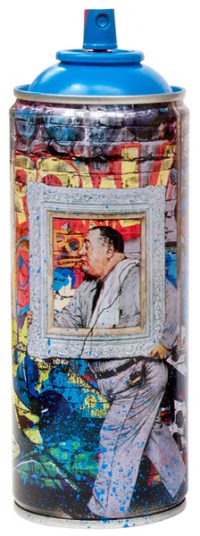
Mr Brainwash- Thierry Guetta Wall Frame Cyan Spray Paint Can Sculpture by Mr Brainwash- Thierry Guetta
2020 Signed Via Thumbprint & Numbered With Custom Display Box. Wall Frame- Cyan Limited Edition Spray Paint Can Sculpture Artwork by street artist graffiti & pop culture legend Mr Brainwash- Thierry Guetta. 2020 Signed & Numbered Limited Edition of 150 Artwork Size 3x8 Signed Via Thumbprint & Numbered With Custom Display Box. Ultra rare and very cool Mr Brainwash- Thierry Guetta limited edition spray paint can artwork collectibles.
$504.00
-
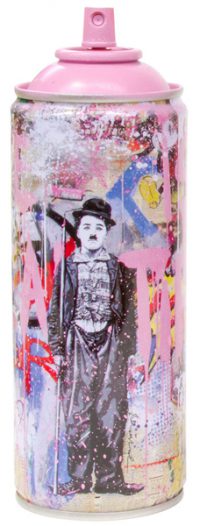
Mr Brainwash- Thierry Guetta Gold Rush Pink Spray Paint Can Sculpture by Mr Brainwash- Thierry Guetta
Gold Rush- Pink Limited Edition Spray Paint Can Sculpture Artwork by street artist graffiti & pop culture legend Mr Brainwash- Thierry Guetta. 2020 Signed & Numbered Limited Edition of 150 Artwork Size 3x8 Signed Via Thumbprint & Numbered With Custom Display Box. Ultra rare and very cool Mr Brainwash- Thierry Guetta limited edition spray paint can artwork collectibles.
$504.00
-

Saber Rebels Flag Serigraph Print by Saber
Rebels Flag Limited Edition Framed Hand Pulled Serigraph Print on Nepalese Cannabina Fiber Fine Art Paper by Graffiti Artist Legend Saber. 2010 Framed Saber Rebels Flag Serigraph in colors on hand-made Nepalese Cannabina Fiber Fine Art paper 31-3/4 x 39-1/2 inches (80.6 x 100.3 cm) (sheet) Ed. 17/80 Signed in ink and numbered in pencil along lower edge. Floated and framed under acrylic. White Modern Framed Dimensions 39.25 X 47 Inches.
$820.00
-
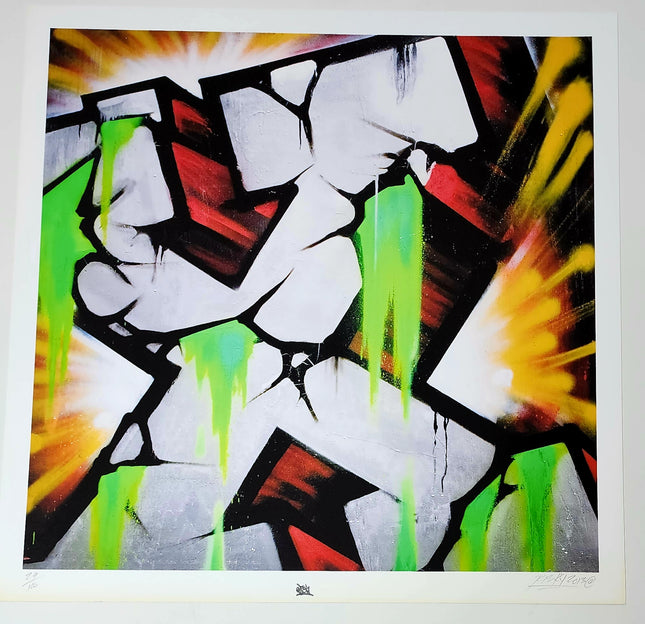
Risk Rock Risky X Graffiti Alphabet Letter Giclee by Risk Rock
Risky X Graffiti Alphabet Letter Giclee by Risk Rock on Fine Art Paper Limited Edition Pop Street Art Artwork. 2012 Signed & Numbered Limited Edition of 100 Artwork Size 24x24 From the first “Beyond The Streets” exhibit in 2012. Museum Quality Paper With Minor to Light Margin Yellowing, Image Perfect, and Can Be Easily Covered With Mat.
$470.00
-
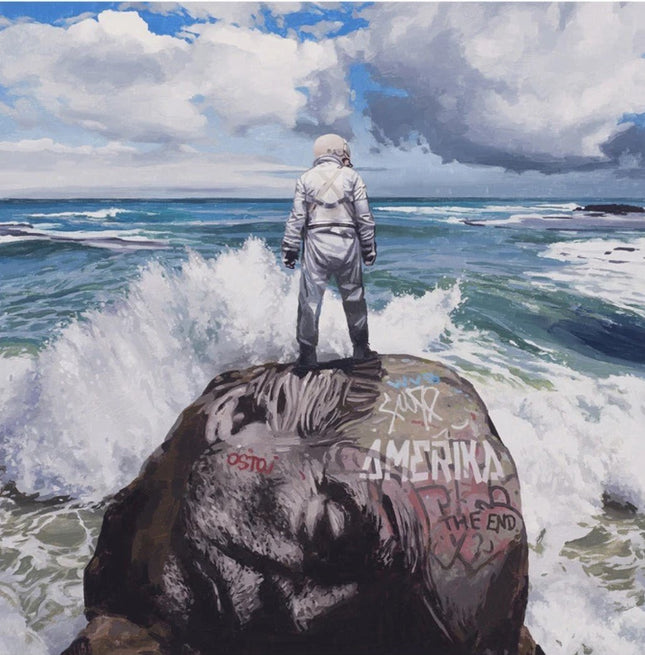
Scott Listfield Ozymandias Archival Print by Scott Listfield
Ozymandias Artwork Giclee Limited Edition Print on Fine Art Paper by Pop Culture Graffiti Artist Scott Listfield.
$495.00
-
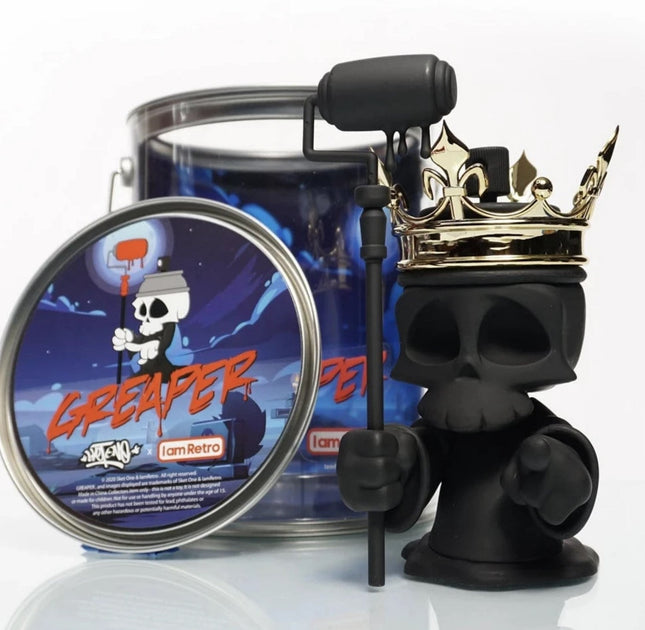
Sket-One Greaper- Black Death Art Toy by Sket-One
Greaper- Black Death Limited Edition Vinyl Art Toy Collectible Artwork by street graffiti Sket-One. Skuffs From Storage To Black Throughtout Edition of 500. Greaper, is the reaper and collector of spent spray can souls and now it has come time to collect on a freshly designed mural debt. Black Death Greaper comes murdered out in all at black on the entire body and paint roller sta accompanied with a shining gold crown only good enough for a Graffiti King. Figure stands at 7.5” Tall with Paint Can Style Packaging. Removable Paint Staff, and adjustable hands with a removable Gold crown.
$208.00
-
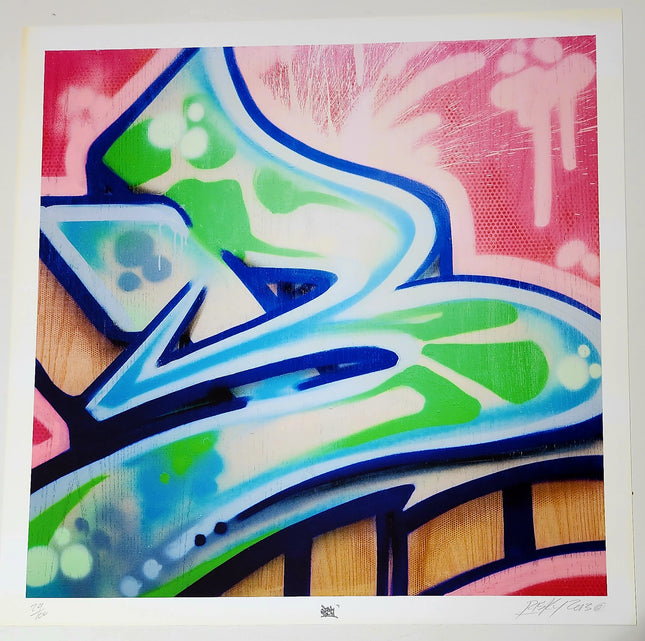
Risk Rock Risky B Graffiti Alphabet Letter Giclee by Risk Rock
Risky B Graffiti Alphabet Letter Giclee by Risk Rock on Fine Art Paper Limited Edition Pop Street Art Artwork. 2012 Signed & Numbered Limited Edition of 100 Artwork Size 24x24 From the first “Beyond The Streets” exhibit in 2012. Museum Quality Paper With Minor to Light Margin Yellowing, Image Perfect, and Can Be Easily Covered With Mat.
$470.00
-
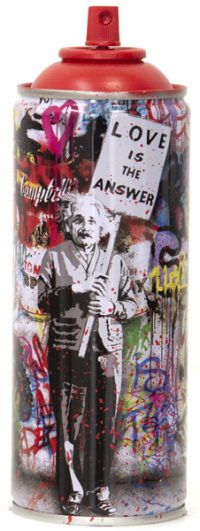
Mr Brainwash- Thierry Guetta Love is the Answer Red Spray Paint Can Sculpture by Mr Brainwash- Thierry Guetta
Love is the Answer- Red Limited Edition Spray Paint Can Sculpture Artwork by street artist graffiti & pop culture legend Mr Brainwash- Thierry Guetta. 2020 Signed & Numbered Limited Edition of 150 Artwork Size 3x8 Signed Via Thumbprint & Numbered With Custom Display Box. Ultra rare and very cool Mr Brainwash- Thierry Guetta limited edition spray paint can artwork collectibles.
$504.00
-
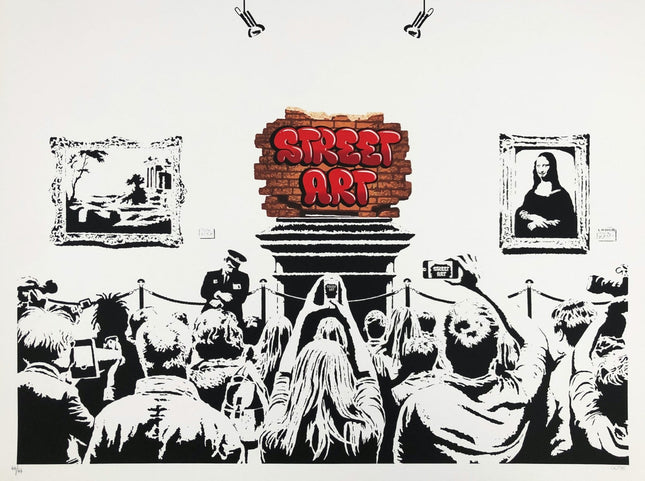
Outis Revandalism Red Silkscreen Print by Outis
Re-Vandalism- Red 11-Color Hand-Pulled Limited Edition Silkscreen Print on 300gsm Somerset Satin Paper by Outis Rare Street Art Famous Pop Artwork Artist. 2015 Signed & Numbered Edition 44 by the Artist Outis Red Variant 11 Colour Screen Print on Somerset 300 gsm paper. 70 x 52cm Artwork of a Graffiti Tag Throw Up in an Art Gallery Industrial Setting with a Crowd of People Taking Photos and Admiring Street Art. Re-Vandalism Red by Outis Re-Vandalism Red is a powerful and thought-provoking 11-color hand-pulled silkscreen print created by the enigmatic street pop artist Outis. Released in 2015 as a limited edition of just 44 pieces, this print blends the rebellious essence of graffiti artwork with the refined setting of an art gallery. Measuring 70 x 52 cm and printed on 300gsm Somerset Satin paper, the artwork explores themes of urban expression, cultural acceptance, and the evolving relationship between street art and institutionalized fine art. A Bold Commentary on Art and Culture This print depicts a striking scene of a graffiti tag in vibrant red, styled in a throw-up fashion, prominently displayed on a pedestal in an art gallery. The setting, complete with an admiring crowd, detailed framed classical paintings, and a security guard, creates a fascinating juxtaposition. The red graffiti text boldly declares "Street Art" against a brick wall background, challenging viewers to reconsider how street pop art and graffiti artwork are perceived when placed in a traditional fine art context. The vibrant red serves as a focal point, drawing attention to the clash between the raw energy of urban art and the polished atmosphere of the gallery. The Artistic Vision of Outis Outis, whose name references the Greek word for "nobody," is a mysterious figure celebrated for his sharp social commentary and unique approach to street pop art. His work often critiques societal norms, highlighting the shifting boundaries between vandalism, rebellion, and art. Re-Vandalism Red encapsulates this ethos by placing street art in a space traditionally reserved for fine art, questioning notions of legitimacy, value, and cultural hierarchy. The use of meticulous 11-color silkscreen printing demonstrates Outis’ commitment to craftsmanship while maintaining the raw edge of graffiti-inspired themes. A Limited Edition Collectible Re-Vandalism Red is part of a highly exclusive limited edition of 44 prints, each signed and numbered by Outis. The use of high-quality 300gsm Somerset Satin paper ensures that the vibrant colors and intricate details are preserved, making the piece both visually striking and enduring. The relatively large size of the artwork enhances its presence, making it a standout addition to any collection of contemporary art. The combination of its limited availability, bold visual narrative, and cultural significance elevates it to the status of a prized collectible. Re-Vandalism Red by Outis is a celebration of the transformative power of street pop art and graffiti artwork. By placing graffiti in an institutionalized art setting, it challenges viewers to rethink cultural biases and explore the evolving definitions of art. This limited-edition print is not just a work of art but a statement on the ongoing dialogue between tradition and rebellion, making it a must-have for collectors and enthusiasts alike.
$568.00
-
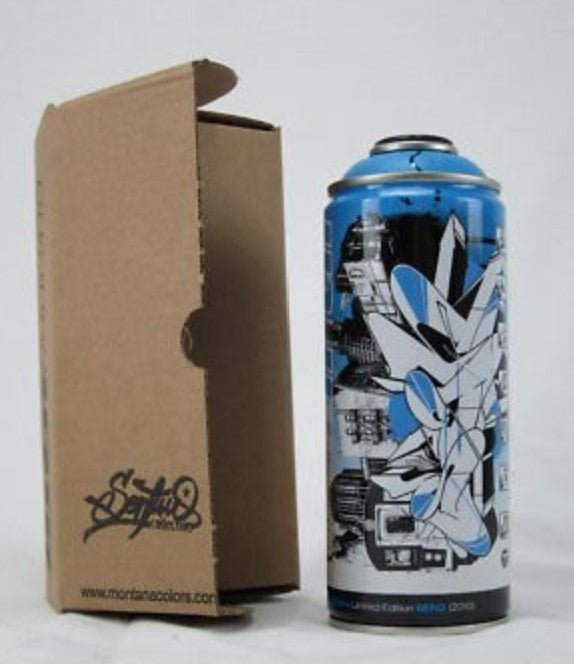
Sen2 Sen2 Light Blue Spray Paint Can Artwork by Montana MTN
Sen2- Light Blue Limited Edition Rare Spray Paint Can Artwork Crossover by famous graffiti paint maker Montana MTN. Born in Puertorico, grown in the Bronx, representing worldwide, SEN2 (4Burners) is an NYC icon who developed his style with respect for the wild style tradition and interest for the European styles.
$218.00
-
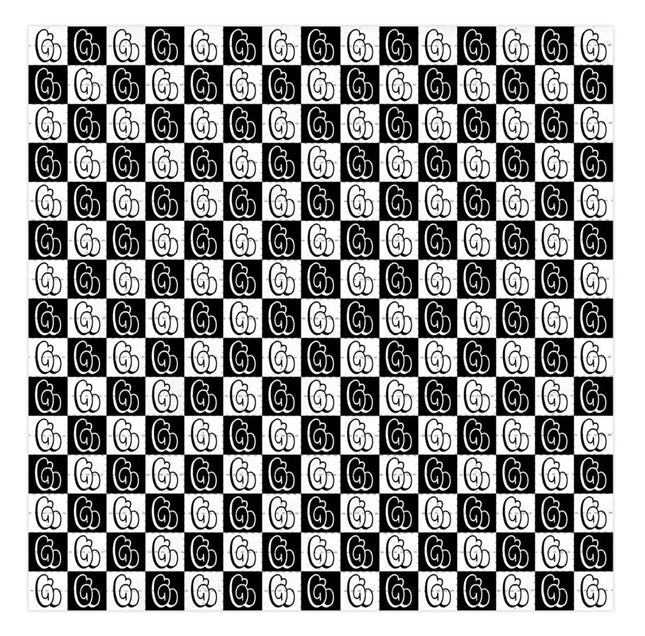
Mike Giant Giant G Blotter Paper Archival Print by Mike Giant
Giant G Blotter Paper Limited Edition Archival Pigment Print Art on Perforated Blotter Paper by Mike Giant pop culture LSD artwork. Archival Pigment Print on Perforated Blotter Paper Size: 7.5 x 7.5 Inches Release: April 19, 2019 Run of: 50
$352.00
-

BG183 Water Fall Brick Wall Tats Cru Original Spray Painting by BG183
Water Fall Brick Wall Tats Cru Original Spray Paint Painting by BG183 One of a Kind Artwork on Gallery Wrapped Canvas by Street Art Pop Artist. 2017 Spray Paint Painting Original Ready to Hang Artwork Size 12x12 Water Fall Brick Wall by BG183 of Tats Cru – Original Spray Paint Artwork in Street Pop Art & Graffiti Artwork Water Fall Brick Wall is a 2017 original spray paint painting on a 12 x 12 inch gallery wrapped canvas by BG183, a founding member of the legendary graffiti collective Tats Cru. This one-of-a-kind piece is a visual embodiment of New York’s graffiti legacy, blending illustrative mastery with the texture and iconography of urban decay. The title references both a literal cascade of water and the rhythmic flow of paint across a weathered surface, evoking the layered history of graffiti walls where years of tags, buff marks, and new burners converge into visual sediment. BG183 channels that history through a meticulously controlled aerosol technique, using soft gradients, bold shapes, and textured overlays to mimic the depth and permanence of a brick wall weathered by time, spray, and spirit. BG183 and the Tats Cru Tradition As one of the core members of Tats Cru, BG183 has played a key role in redefining what graffiti can be both on the street and in gallery spaces. Known for his technical range, from wildstyle burners to hyper-detailed characters, BG183’s work always maintains the energy of the street even when translated to canvas. Water Fall Brick Wall reflects that ability to carry raw graffiti aesthetics into the language of fine art without diluting its power. The composition is bold and balanced, structured with layers that feel both spontaneous and composed, a characteristic mark of a writer with decades of experience navigating walls, trains, and community murals. Tats Cru’s influence on hip hop visual culture, public art, and muralism flows directly into this piece, grounding it in authenticity and authority. Spray Paint Texture and Surface Depth The surface of Water Fall Brick Wall is alive with texture—misty edges, hardline fades, and drip formations that simulate the stratification of layered graffiti over time. BG183 uses the canvas not as a flat background but as a sculptural element, giving visual weight to each spray layer. The color palette leans into cool blues and warm earth tones, referencing water movement against brick decay, while still maintaining vibrancy. The edges of the piece echo the softness of aerosol dispersal, blending into the gallery-wrapped sides in a way that allows the work to exist without a frame. This ready-to-hang presentation reinforces the idea of street art entering fine art space without losing its connection to outdoor surfaces and uncurated expression. Urban Energy in Street Pop Art & Graffiti Artwork Water Fall Brick Wall stands as a concentrated burst of graffiti’s raw language reassembled for interior contemplation. It is a homage to the layers of city infrastructure—walls that hold names, messages, and identities built up over time. BG183 does not attempt to replicate graffiti; he reinterprets its essence, offering a piece that is both a portrait of a wall and a standalone visual narrative. In the broader conversation of Street Pop Art & Graffiti Artwork, this painting represents the bridge between street-coded authenticity and studio execution. It holds graffiti’s visual rhythm, spatial awareness, and cultural reverence in every layer of paint and in every inch of surface tension. It is not just an artwork—it is a declaration from a writer who has earned his mark, signed in spray and built from brick and motion.
$750.00
-
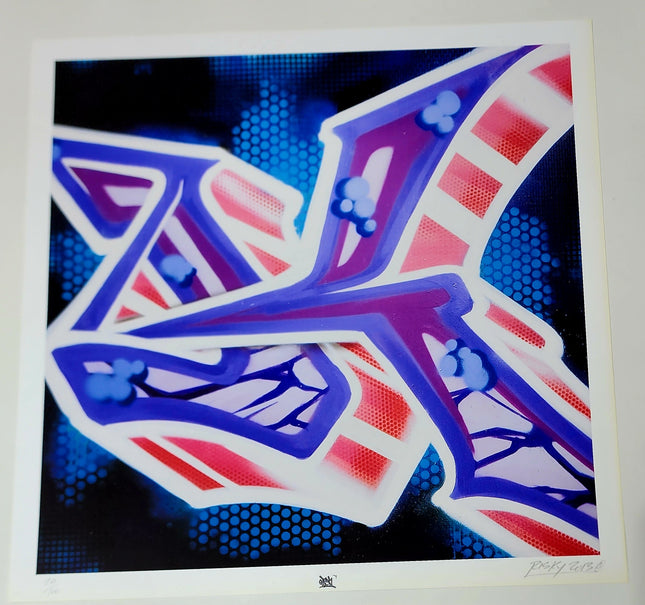
Risk Rock Risky K Graffiti Alphabet Letter Giclee by Risk Rock
Risky K Graffiti Alphabet Letter Giclee by Risk Rock on Fine Art Paper Limited Edition Pop Street Art Artwork. 2012 Signed & Numbered Limited Edition of 100 Artwork Size 24x24 From the first “Beyond The Streets” exhibit in 2012. Museum Quality Paper With Minor to Light Margin Yellowing, Image Perfect, and Can Be Easily Covered With Mat.
$470.00
-
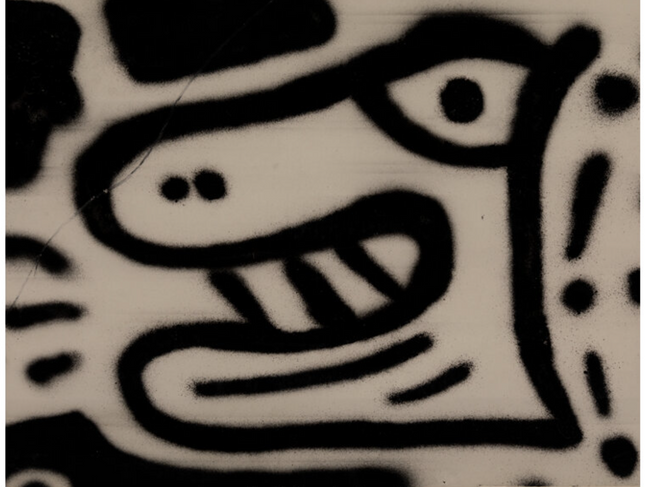
Mr Doodle- Sam Cox Caravan Chaos Side 4 Panel 11 Original Spray Painting by Mr Doodle- Sam Cox
Caravan Chaos Side 4 Panel 11 Original Spray Paint Painting by Mr Doodle- Sam Cox One of a Kind Artwork on Aluminum Panel Mounted On Plywood by Street Art Pop Artist. 2015 Caravan Chaos Side 4 Panel 11 Original 1 of 2 Serial Numbered Spray Painting Original on Aluminum Panel Mounted Plywood Artwork Size 17.25x13.5. Natural Scuffing Lower Right; Residue Lower Right Inherent To The Medium & Media Used. Mr Doodle- Sam Cox's Unique Artistic Language In the dynamic world of pop art and street art, artists like Mr. Doodle, also known as Sam Cox, have carved out a niche with distinctive styles that blur the lines between art, doodling, and graffiti. Mr Doodle's "Caravan Chaos Side 4 Panel 11" is an original work that exemplifies this fusion, showcasing a unique visual language that is playful and meticulously detailed. This one-of-a-kind spray paint painting on an aluminum panel mounted on plywood stands out as a testament to the artist's skill and originality. Spray-painting directly onto an aluminum surface, Mr Doodle's "Caravan Chaos Side 4 Panel 11" is part of a larger body of work that portrays a chaotic yet harmonious world filled with interlocking characters and symbols. Measuring 17.25 by 13.5 inches, this artwork is a vibrant tableau of black and white, teeming with life and movement. The natural scuffing and residue are inherent to the medium and media used to add an extra layer of authenticity and rawness to the artwork. These imperfections are not drawbacks but integral elements contributing to the piece's storytelling. Exploring the Details of Caravan Chaos The intricate patterns and characters that seem to dance across the metal canvas make the artwork's complexity apparent. Each character is whimsically drawn, yet an underlying order to the chaos suggests a narrative or a snapshot of a larger, unseen universe. This snapshot is a classic example of how street art and pop art can transform everyday objects and materials into something extraordinary, a characteristic feature of Mr Doodle's artistic approach. The choice of materials in "Caravan Chaos Side 4 Panel 11" is crucial to understanding Mr Doodle's work. The aluminum panel offers a smooth surface that interacts uniquely with the spray paint, allowing for crisp lines and a stark contrast between the black and white hues. Mounted on plywood, the piece gains a sturdy backdrop, anchoring the ethereal doodles to a physical reality. The natural wear on the artwork suggests it has lived beyond the studio, perhaps even in the streets, where the essence of graffiti art is rooted. The Legacy of Mr Doodle's Caravan Chaos This piece by Mr. Doodle is not just a singular work of art but a fragment of a grander vision the artist has been developing over the years. His style is instantly recognizable and has become synonymous with the playful energy and spontaneity that pop art and street art strive to embody. "Caravan Chaos Side 4 Panel 11" is a frozen moment of this vision, inviting viewers to enter Mr Doodle's world—where art is seen and experienced. Sam Cox's contribution to the art world through his Mr Doodle persona is a vibrant chapter in the ongoing pop and street art story. His works, like "Caravan Chaos Side 4 Panel 11," are visually stimulating and a reminder of the power of art to transform and engage with its audience on multiple levels. As this piece stands, it is a celebration of creativity unleashed, a fitting piece for any collection that values the bold and the whimsical.
$2,626.00
-
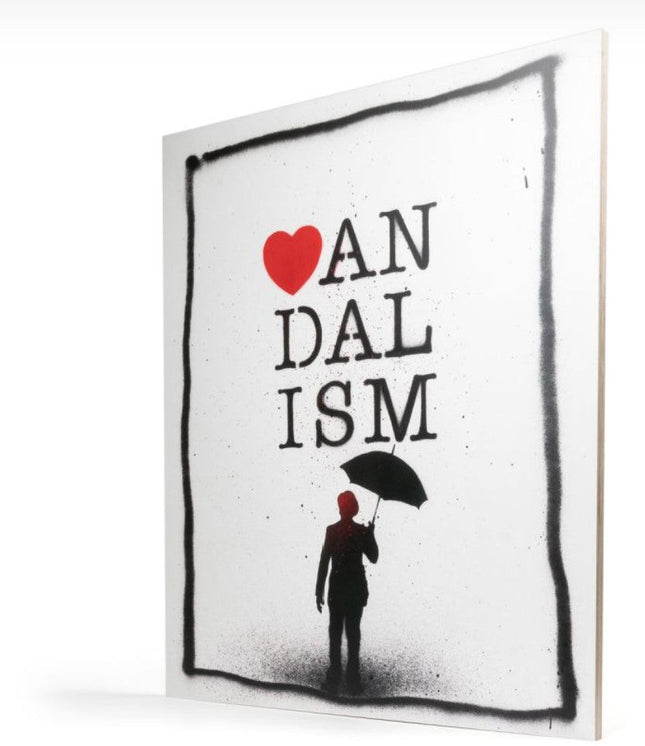
Nick Walker Vandalism Stencil Wood HPM Print by Nick Walker
Vandalism Print on Wood Panel Framed Ready to Hang by Nick Walker Street Art Modern Pop Artist. 2018 Vandalism Stencil Wood HPM Print by Nick Walker Framed 17 x 20 in. (43.18cm x 50.80cm) Vandalism by Nick Walker DCon exclusive limited edition of 50 fine art wood prints each hand-signed and numbered. Each print comes with a signed and numbered Certificate of Authenticity Fine art wood print on 1/2" sustainable Birch, Bright White finish
$533.00
-

Martin Whatson Photographer Original AP Acrylic Spray Painting by Martin Whatson
Photographer Original AP Acrylic Spray Painting by Martin Whatson, One of a Kind Artwork on Stretched Canvas by Street Art Pop Artist. AP Artist Proof 2008 Handmade Stencil Spray Paint & Acrylic Signed Painting Original Artwork Size 30x20. Mild scuffing along right edge. Martin Whatson Photographer Original AP Street Pop Art & Graffiti Artwork Background and Artistic Identity Martin Whatson, born in Norway in 1984, is internationally recognized for his ability to merge detailed monochrome stencils with bursts of vibrant graffiti energy. This signature approach positions him at the forefront of contemporary street pop art and graffiti artwork, appealing to both urban art enthusiasts and fine art collectors. His training at the Westerdals School of Communication in Oslo provided him with a strong design foundation, but it was his discovery of stencil art in the early 2000s that shaped his artistic trajectory. Over time, Whatson has developed a style that not only reflects his Norwegian roots but also speaks to a global audience, merging the structure of stencil art with the unpredictability of street graffiti. About the Photographer Original AP Painting The *Photographer* Original AP (Artist Proof) from 2008 is a rare, one-of-a-kind artwork created using handmade stencil spray paint techniques combined with acrylic on stretched canvas. Measuring 30x20 inches, this signed painting captures the early era of Whatson’s career, when his exploration of stencil realism was becoming intertwined with graffiti-infused abstraction. The composition depicts a monochromatic, life-like photographer mid-action, aiming the camera toward an explosion of vivid orange and yellow paint splatter. This juxtaposition between the structured, carefully rendered figure and the spontaneous energy of the paint captures Whatson’s philosophy — that life is a balance between control and chaos. Symbolism and Visual Narrative The *Photographer* artwork embodies themes of observation, creativity, and the relationship between the artist and their subject. The photographer, rendered in grayscale, represents focus, discipline, and the technical side of art-making. In contrast, the bright splatter across the canvas represents raw creativity, spontaneity, and the unpredictable nature of inspiration. The use of warm colors like orange and yellow injects energy and draws the viewer’s gaze, suggesting that creativity often emerges in bold and unexpected ways. The piece invites reflection on how moments are captured — whether in street photography, graffiti, or fine art — and how the act of seeing is as artistic as the act of creating. Collectibility and Rarity As an Artist Proof from 2008, this *Photographer* piece holds special significance. Artist Proofs are typically produced in extremely limited numbers outside the main edition, reserved for the artist’s personal collection or for special release. The fact that this work is a handmade original, rather than a print, enhances its desirability among collectors of street pop art and graffiti artwork. Its early date makes it an important marker of Whatson’s evolving style, bridging his formative stencil work with the later, more color-saturated compositions that have become his signature. Martin Whatson’s Place in Street Pop Art Over the years, Martin Whatson’s work has appeared in galleries, public murals, and private collections across the world. His art captures the dynamic tension between the controlled discipline of stencil painting and the unrestrained spirit of graffiti culture. Pieces like *Photographer* demonstrate his early mastery of technical realism while foreshadowing the explosion of color and motion that defines his mature work. In the broader context of contemporary street pop art, Whatson stands out as an artist who can merge fine art sensibility with the raw authenticity of urban expression, creating works that are as thought-provoking as they are visually striking.
$7,500.00
-
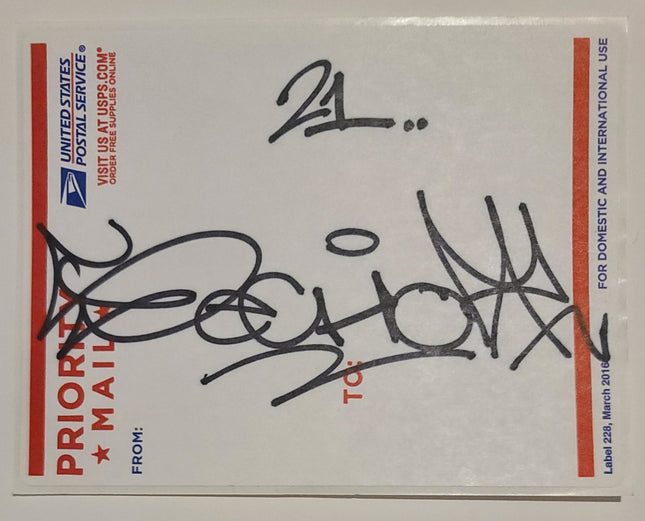
Sechor Priority Mail Double White 2021 Slap-Up by Sechor
Priority Mail Double White 2021 Original Marker Slap-Up Label Painting/Drawing Art on USPS Label by Tru Graffiti Legend Sechor Modern Street Artist. 2021 Original Slap Up Graffiti Art Tag Sticker, Signed 4.25x5.5 Marker on USPS Priority Mail Label.
$24.00
-
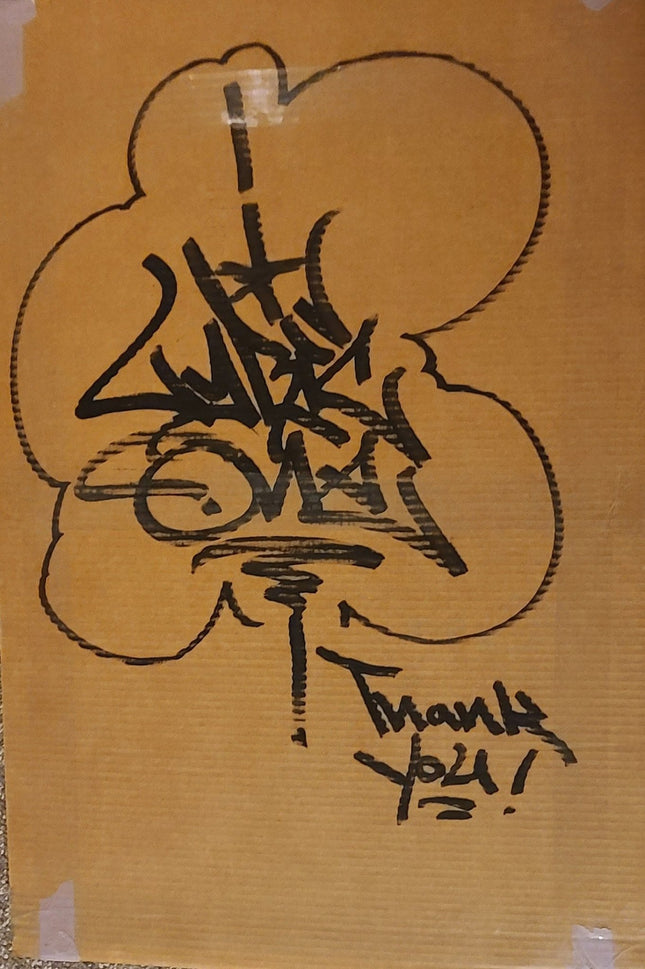
Lyric One Thanks Tagged Cardboard Original Drawing by Lyric One
Thanks Tagged Cardboard Original Spray Paint Hand Drawing on Cardboard With Tape by Modern Street Artist Lyric One. 2021 Large Drawing Tag Signed 24x36 Artwork
$103.00
-
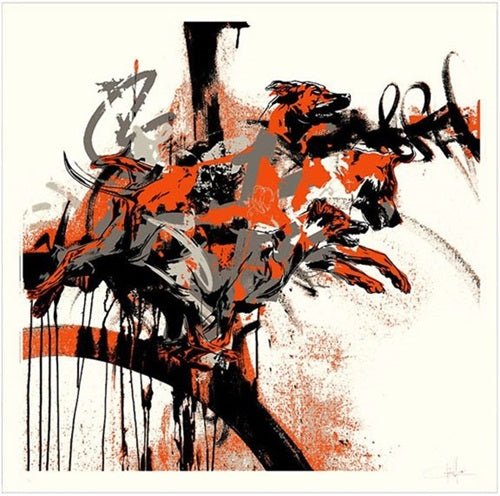
Dave Kinsey Unrested Silkscreen Print by Dave Kinsey
Unrested Limited Edition 4-Color Hand-Pulled Silkscreen Print on 275gsm Fine Art Paper by Dave Kinsey Graffiti Street Artist Modern Pop Art. Created from original paintings at Lazarides gallery. Dave Kinsey (American b.1971), 'Unrested', 2008, screenprint in colours on off white paper, signed, dated and numbered from an edition of 200 in pencil, published by BLK MRKT Editions; sheet: 66 x 66cm
$352.00

